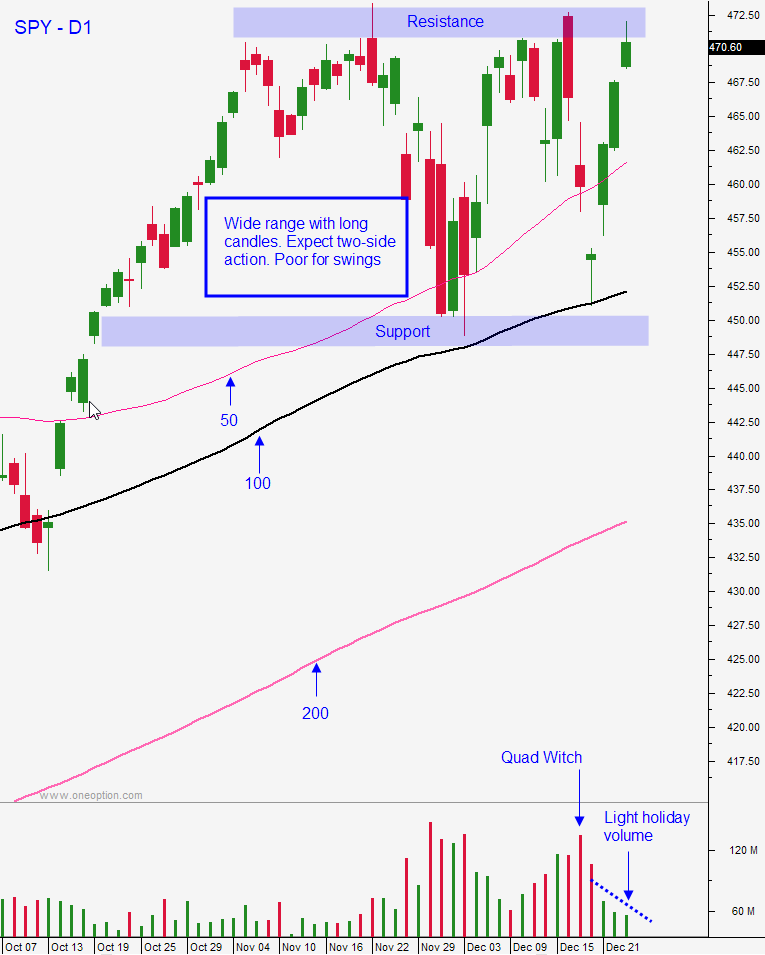Question
Today Bobby Z. asked, “How do you determine where to place your stops?”
Answer
First of all, thank you for all of the questions. There were many of you that had this question but Bobby asked it first. Keep them coming.
I could write on this topic for weeks and still not cover it so I will try to provide an overview and hope that in the future I can drill down into specific examples. Today I will cover stops designed to protect capital as opposed to stops that lock in profits.
Stops are an integral part of the game plan and they are not an after thought. I do not believe that you can assign a random number (i.e. 10%) and use it universally – each trade is different. Before I determine a stop I write down my expectations for the move and it incorporates the market, the previous price patterns for the stock, the technicals and time frame.
All of my analysis starts with the market – 75% of all stocks follow the market. Think of it, you will lose money on 3 out of 4 trades if you are on the wrong side. I look at support/resistance lines, trend lines and moving averages to form my opinion. If there is a market breakout or a breakdown, I may stop out a stock trade even if the stock has not participated in the market’s move.
When I consider previous price behavior I look at how the stock normally acts. If it is a wild ride, I will keep my size small and use wide stops because I don’t want to get “whipsawed out”. The small size gives me staying power and I don’t sweat the loses due to “noise”. Two weeks ago in the Daily Report we were short NBIX. I told subscribers keep the size tiny (200 shares) and use a very wide stop, this stock will drive you nuts while we wait for the breakdown. Sure enough it was up and down $2 a day and then one day… it was down $31. I picked a resistance level and stuck with it. In other instances where the stock is orderly, a tight stop would be more appropriate. These stocks are relatively predictable and when they stray, the move is over.
For the technicals I keep it simple. I use horizontal support and resistance levels, trend lines and major moving averages. I try to determine in each case which one will have the most significance. In some cases stocks really follow a trend line, in others it might be a support line. If a level is violated and in my game plan I thought it would hold – I’m out.
Time is important because it keeps me honest. If a trade has not done what it was supposed to I’m forced to question my original assumption. I do my analysis and I execute the trade. I’m not placing a trade because I think in two years it will be higher. I’m doing the trade because the stock looks good – RIGHT NOW. If it doesn’t look good right now, I’ll wait until it does. As time ticks away, the risk increases and randomness enters the equation. I saw something that looked good and I jumped on it. With every passing moment there is a greater chance that I will be blindsided. I’m also forced to evaluate weather the stock is still showing relative strength/weakness to the market. If the market is up and I’m long, why isn’t the stock participating? Has it lost its Mo Jo?
Options stops are a completely different animal and I can address that another time. In short, the stops are based on the underlying, not the price of the option.









